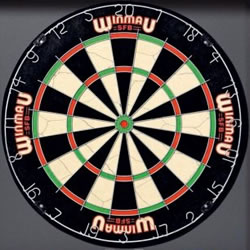Study, work or travel in the UK. British
culture and life.


Watch or play darts in the UK
|
|
Study, work or travel in the UK. British
culture and life.
|
|
||
|
|
|
|
||
 |
||||
|
|
|
|
||
 |
||||
|
Watch or play darts in the UK
|
||||
|
Sections:
|
Introduction | |
| How to play / vocabulary | ||
| Further information | ||
| Links |
| Winmau
Professional Darts Set Manufacturer: Winmau |
 A dartboard |
 A maximum score: 180 (3 x triple 20) |
|
|
|